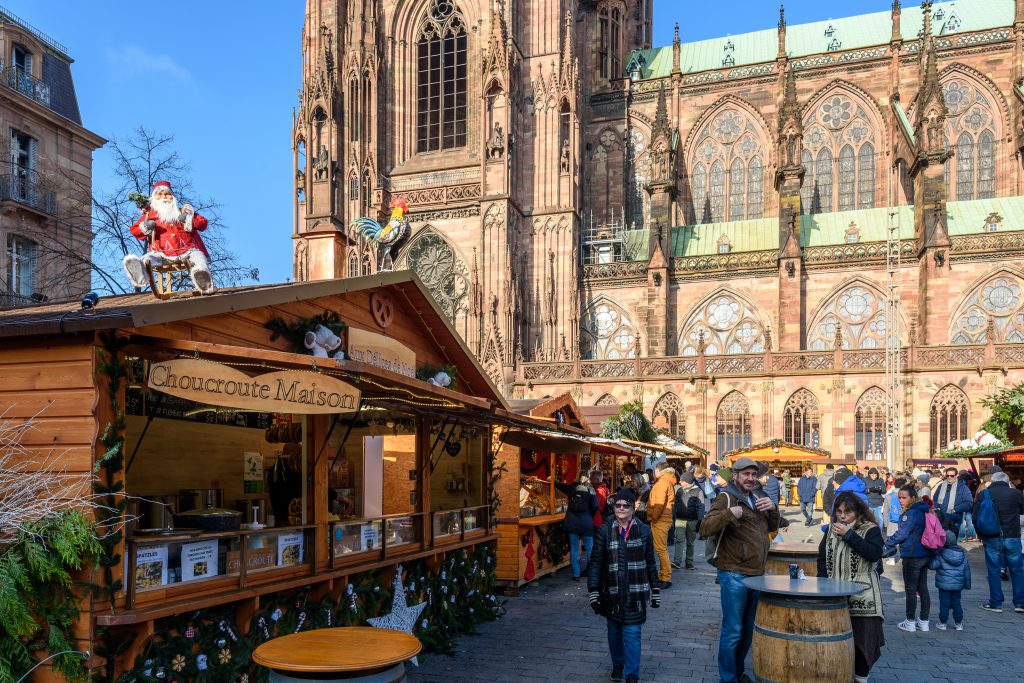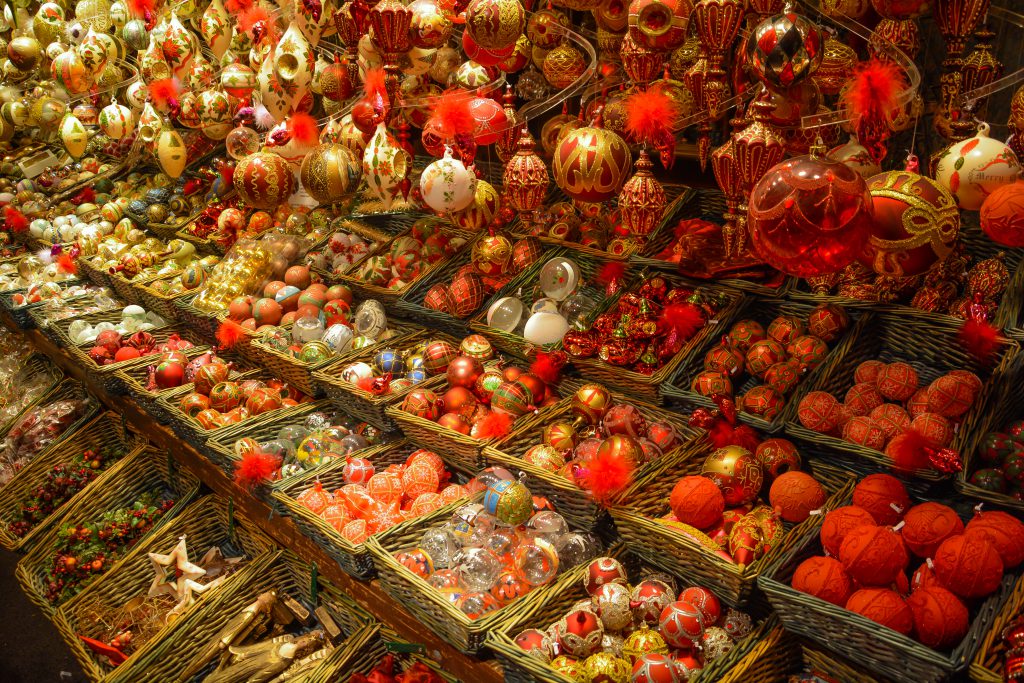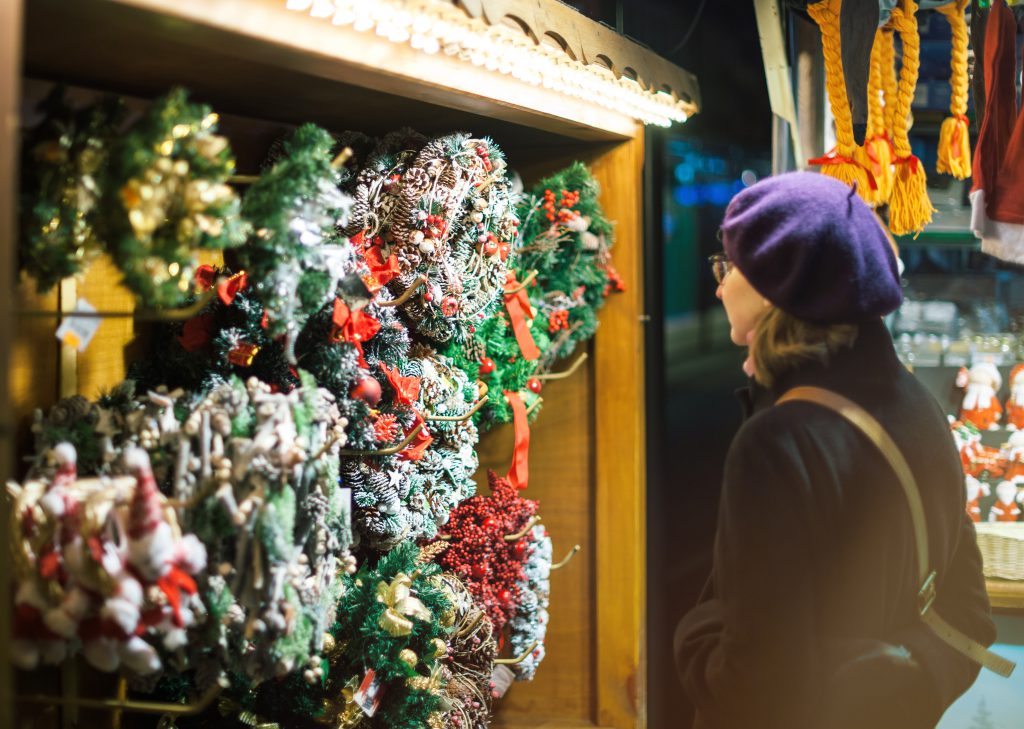Thuy Phuong
Christmas markets are some of the most important and unique seasonal fairs in many European countries. Historical records trace the first Christmas market back to the 14th century in Germany or the Alsace region of France. Originally known as the “Saint Nicholas Market”, it was named after the patron saint of children. These markets have been popular for centuries in Central and Eastern Europe, including in Austria, Switzerland, Germany, France, and beyond. Today, this market tradition has spread worldwide.

Centuries-old markets
Traditionally, these markets opened four weeks before Christmas and closed on Christmas Eve. However, nowadays, they may remain open until the early days of the New Year. These markets feature central locations in villages, towns, districts, cities, or capitals. They boast vibrant decorations and numerous stalls selling decorative items, local produce, traditional delicacies, handmade souvenirs, etc.
For centuries, up until the mid-1990s, the Christmas market in Strasbourg (France), the historical capital of the Alsace region near the German border, was the largest in Europe. In 1995, due to its growing success, Strasbourg introduced its Christmas market model at various international tourism fairs. Just a year later, in 1996, Christmas markets blossomed globally, from the United States to India, and from Hong Kong to Japan. Notably, major European cities hosted markets for various purposes, such as promoting tourism, culture, and commerce. Germany, France, and the UK host the most Christmas markets in Europe. Tourism companies have even expanded their offerings to include river cruises, in addition to traditional bus tours, stopping at Christmas markets along the Danube River from Germany to Hungary. More than ever, Christmas has become a season of festivities, entertainment, and shopping.

Strasbourg’s world-famous Christmas market
What makes Christmas markets so popular and widespread? They satisfy all our senses. Let me take you to Europe’s most renowned Christmas market in Strasbourg, France.
First, it’s visual feast. From a distance, the market shimmers with the sparkling colors of various candles and lights, their hues blending into some streets. Stepping inside, visitors are overwhelmed by the items on offer: candles, soaps, perfumes, intricately carved wooden angels, jewelry, home decor, plastic and wooden toys, snow globes hanging from Christmas trees, etc.
As well as dazzling our eyes, the market delights our ears with a variety of music: Christmas carols, chamber music, sometimes even country tunes, along with the shouts and cheers of people playing games for prizes, shoppers bargaining, and kids begging their parents for toys. All of this is in a lively mix of languages.
Next come the turns of our sense of smell and taste, with an array of delightful aromas and flavors! The most characteristic drink is Gluhwein, mulled wine infused with cinnamon and other spices. Exploring the market in the cold, with a hungry belly and cold hands, everyone wants to stop at a mulled wine stall to enjoy a cup and warm up. The food is diverse, ranging from sweet to savory, from appetizers to main dishes and desserts. There’s everything from chocolate bars to hot chocolate, spiced bread, roasted chestnuts, cheese, grilled sausages, smoked meats, and french fries…
If you don’t eat, drink, play, admire, or shop, you haven’t really experienced a Christmas market! When the tallest, largest Christmas tree appears like a sparkling scented candle amidst the snow in the middle of the market, the whole market feels like a snow globe hanging on that tree.

Heritage in the modern era
In the early 19th century, with the start of the Industrial Revolution, the urban working class expanded, and people’s living standards gradually improved, making Christmas markets popular with city dwellers. While urban workers were attracted to these markets, the elite showed little interest in the inexpensive products on offer. By the end of the 19th century, as capitalism flourished in Europe, the owners of large chain stores began campaigns to drive Christmas markets out of the cities to eliminate competition. In Germany, from Berlin to Nuremberg, markets were either shut down or pushed to the outskirts.
By the end of the 20th century, businesses increasingly understood the commercial and financial weight that Christmas markets brought not only to enterprises but also to the economy of a city or even a nation. Trading for 11 months of the year couldn’t match the revenues earned in just one month of Christmas markets. Famous since the late 1990s, the market in Strasbourg, France, draws more international visitors than any other Christmas market in the world. Here, in December alone, restaurants and hotels can make about 15-20% of their annual revenue. The market also rejuvenates the tourism industry, which is typically slower in the cold winter months.
Culturally, the market contributes to creating a sense of “localism” through regional products, culinary tastes, and cultural practices in an increasingly “flattened” world. Before the 20th century, Christmas markets were primarily religious events. The 20th century transformed them into commercial phenomena. The commercialization of cultural customs is evident in the products sold at these markets over the centuries. In the Middle Ages, market products were tied to holiday preparations: wax for candles, spices for cooking, distinctive Christmas cakes, dried fruits, and carved wooden toys for children. By the 16th century, Christmas markets included decorative Christmas tree ornaments. Towards the end of the 19th century, these markets began featuring jewelry, perfumes, and interior decorations. From the 1990s to the present, vendors at Christmas markets offer a bit of everything.
For these reasons, Christmas markets combine tangible an intangible heritage. Each generation adds contemporary characteristics, however perfect or imperfect. “What makes Christmas markets so significant is not just the buying and decorations, but everything that we hear, smell, and see, as well as the presence of everyone around us,” says Professor Dirk Spennemann from Charles Sturt University, Australia.
A Christmas market is like a flavorful and colorful appetizer, heralding the forthcoming Christmas celebrations.










